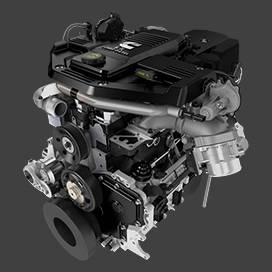Jan . 01, 2025 08:58 Back to list
Understanding Air Brake Drum Functionality and Maintenance in Heavy Vehicles
Understanding Air Brake Drums Essential Components of Heavy-Duty Vehicles
Air brake systems play a critical role in the safety and functionality of heavy-duty vehicles like trucks, buses, and trailers. Among the central components of these systems is the air brake drum, which is vital for efficient braking performance. Understanding the function, structure, and maintenance of air brake drums can help ensure vehicle safety and longevity.
What is an Air Brake Drum?
An air brake drum is a cylindrical component that houses the braking mechanism in an air brake system. When the driver applies the brakes, air pressure is utilized to push the brake shoes against the drum’s interior surface, creating friction that slows down or stops the vehicle. The design of the brake drum allows for the effective dissipation of heat generated from braking, which ultimately leads to a safe and smooth stopping experience.
Structure and Design
Air brake drums are typically constructed from cast iron or other robust materials that can withstand high temperatures and stress. The design includes multiple features that enhance their performance
1. Diameter and Width The size of the drum varies according to the vehicle’s specifications. Larger drums generally provide better braking performance due to increased surface area.
2. Cooling Fins Many modern air brake drums are equipped with cooling fins that help dissipate heat more effectively. This feature is crucial, as excessive heat can lead to brake fade, diminishing braking efficiency.
3. Ventilation Some air brake drums are vented, allowing air to circulate within the drum during operation. This ventilation further aids in cooling and helps maintain optimal braking performance over extended use.
4. Surface Treatment To ensure durability and performance, the interior surface of the drum is often treated or machined to create a fine surface finish that enhances friction with the brake shoes.
Performance and Safety
air brake drum

The performance of air brake drums is critical for vehicle safety. Under intense braking conditions, the braking system must effectively manage heat and wear. If a drum becomes warped or worn out, it can lead to uneven braking. This unevenness can cause serious issues, such as pulling to one side, which can be dangerous during high-speed travel or in emergency situations.
Moreover, regular checks of the air brake drums are essential as part of routine vehicle maintenance. Technicians should inspect the drums for any signs of wear, cracks, or deformation. Ensuring that the brake shoes are properly aligned and making contact with the drum surface is equally important to maintain braking efficiency.
Maintenance Practices
Proper maintenance practices can significantly extend the lifespan of air brake drums and enhance safety. Here are some essential maintenance tips
1. Regular Inspections Conduct frequent inspections of the entire braking system, including the air brake drums. Look for signs of cracking, excessive wear, or heat damage.
2. Brake Adjustment Keep the brake adjustment in check to ensure that the brake shoes are properly aligned with the drum. This alignment is integral to achieving maximum braking efficiency.
3. Debris Removal Clean the brake assemblies and ensure there is no debris that can interfere with the braking process. Dust and dirt can build up, leading to performance issues and premature wear.
4. Heat Monitoring Pay attention to the temperature of the brake drums during operation. If they become excessively hot, it may be necessary to reduce braking force and allow them to cool.
5. Replacement When Necessary If drums show significant wear or damage, they should be replaced promptly. Neglecting to replace worn drums can lead to catastrophic failures and unsafe driving conditions.
Conclusion
Air brake drums are integral to the safety and efficiency of heavy-duty vehicles. Understanding their construction, function, and maintenance can help vehicle operators and fleet managers ensure reliable performance on the road. Regular inspections and proper care are paramount in maintaining the integrity of air brake systems, thus enhancing the safety of both drivers and other road users. As technology continues to advance, innovations in air brake drum design promise to further improve the effectiveness and safety of these crucial components.
-
HINO Industrial Solutions - ¡Ң���ຽ��е��������˾ | Advanced Technology&Reliability
NewsJul.13,2025
-
HINO Industrial Efficiency-Jiangsu Hino Industrial|Productivity Optimization&Cost Reduction
NewsJul.12,2025
-
HINO-¡Ң���ຽ��е��������˾|Advanced Industrial Solutions&Energy Efficiency
NewsJul.12,2025
-
Premium Brake Drum Iveco – Durable Drum Brake Drum & Brake Shoe Solutions
NewsJul.08,2025
-
High-Performance Brake Drum Liza for Enhanced Safety Reliable Drum Brake Drum & Brake Shoe Solutions
NewsJul.08,2025
-
High-Quality Brake Drum MAZ – Durable Drum Brake Drum & Brake Drum and Brake Shoe for Optimal Performance
NewsJul.07,2025
